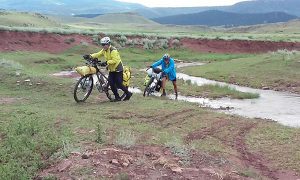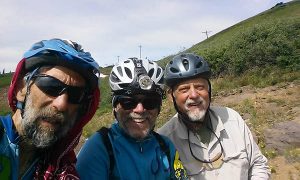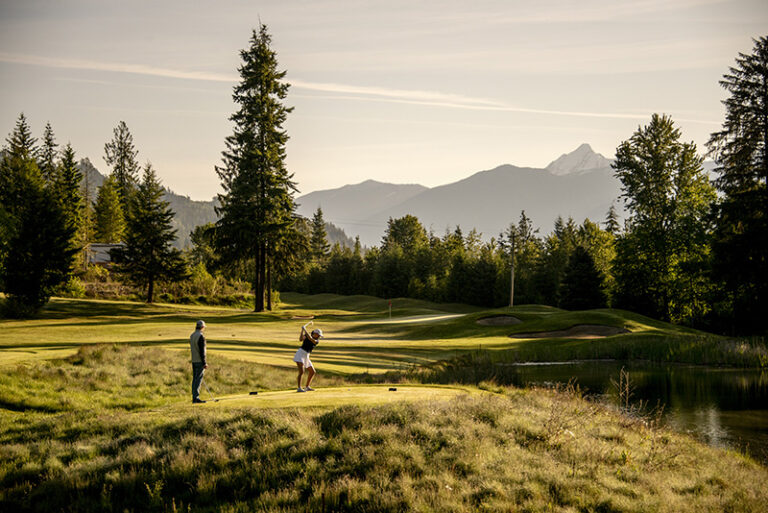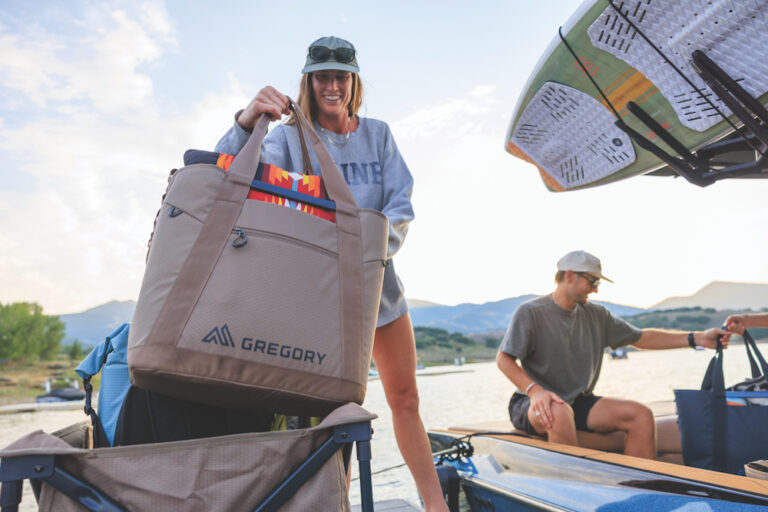Riding the Great Divide Mountain Bike Route from New Mexico to Canada
The Great Divide Mountain Bike Route offers up to 200,000 feet of elevation gain over a distance of 2,745 miles. It roughly follows the Continental Divide, crossing it back and forth about 30 times, from Banff, Alberta, to Antelope Wells, New Mexico. When Garry Kehr, former president of the Spokane Bicycle Club, read an article about the Great Divide route in December 2013, he thought riding the route was something he needed to do. Yeah, some people are like that. We all should be.
Kehr recruited two like-minded cycling souls, Paul Brunton and Jamie Sutherlin, to join him. With ages ranging from 62 to 68 and not an iota of mountain biking experience among them, one might ask, “Why?” An adventure of a lifetime, that’s why. These roadies studied up on bikes, camping gear and the route. They bought bikes and outfitted themselves. They picked the brains of a couple of locals, Rich Shauvin and Chip Andrus, who gladly shared their Great Divide experiences. And they decided 2015 was the year they would set out.
Kehr, Brunton and Sutherlin gradually increased the distance and the weight they carried on their training rides. But to shake down their gear and test the waters of the bike packing pool, Andrus dispatched them to the Quilomene Wildlife Area in Central Washington. Quilomene is harsh, hot and steep. Just the thing for testing your gear, your mettle and your companion compatibility level.

“If you’re still talking to each other when you come out of Quilomene, you can do the Great Divide,” Andrus told them.
The three men came through with flying colors, which is not surprising if you’ve ever met them. They are unassuming, self-deprecating, and so easy going that you immediately feel comfortable around them. They stow their egos in the bottom of their panniers. At some point, somebody referred to the group as the Three Amigos and the name stuck.
Although Kehr was the instigator, he and Brunton credit Sutherlin as the leader. Sutherlin did the planning and navigating, and with many years’ experience fighting wildfires, he shepherded them through the lightning and thunderstorms they encountered.
To minimize the high likelihood of riding and walking through mud in New Mexico, they decided to ride from south to north. New Mexico receives more rain in July and August, so on June 18, they left the U.S.-Mexico border and headed north across the hot desert.
All told, the three men rode 2,289 miles to the Canada border and climbed a total of 147,000 feet. They had seven flat tires, one of which happened when a tube on Kehr’s bike exploded loud enough that Sutherlin and Brunton, who were some distance ahead, heard it. But because it was the Fourth of July, they chalked the sound up to fireworks. Eventually a passing four-wheeler told them about Kehr’s flat, so they turned around to go help him out. The greatest distance that they traveled in one day was 122 miles. Their hottest day was 106 degrees. The most water that they consumed in one day was 9 liters.

They crossed paths with other riders, including many who were doing the Tour Divide race. They chatted with Josh Kato, the eventual winner (by 18 minutes!), who they found calmly sitting against a sign post and eating a snack as if he had nothing better to do. They also met Billy and Lina Rice, a father-and-daughter team who were racing on a tandem bike right after Billy had ridden the course solo from south to north.
The experiences and stories of the Three Amigos are many. But honestly, riding the Great Divide route is about more than overcoming hardship. Yes, the Three Amigos endured heat, cold, steep climbs, wind and rain. They experienced the kind of mud that gums up your bike so badly that you have to drag it after you. But testing your mettle is the price of admission to the wilderness and experience of nature’s raw beauty. Whether the view is of flowering cacti, a red-orange sunset, a crystal-clear starlit sky, or mountains standing like sentinels in the distance, it fills you with awe and gives you a sense of yourself and your place in the universe.
Afterward, the memory is a sanctuary you can return to while walking through winter’s grit on the sidewalk or waiting in line at the checkout stand. You’ll get a wistful look on your face and someone will ask, “Why are you smiling?” You could explain, but they wouldn’t understand because, like hammer and anvil strikes, an adventure like this forges a unique bond among those who have shared the trek. “No reason,” you’ll answer.

I asked Kehr, Brunton and Sutherlin why the Great Divide route is important. Brunton answered first. Kehr and Sutherlin let his answer speak for them. “The GDMBR is a place to quiet your mind from the constant tickle of world events over which we have no control, and to think deeply on things that truly matter: friendship, family, nature, and to seek our own place in the larger scheme of things,” Brunton says. “Even now, as short-sighted men strive to rip apart the fabric of public lands, it is incumbent upon those of us who care to stand up for public places as best we can.”
So what adventure lies in your future?//













